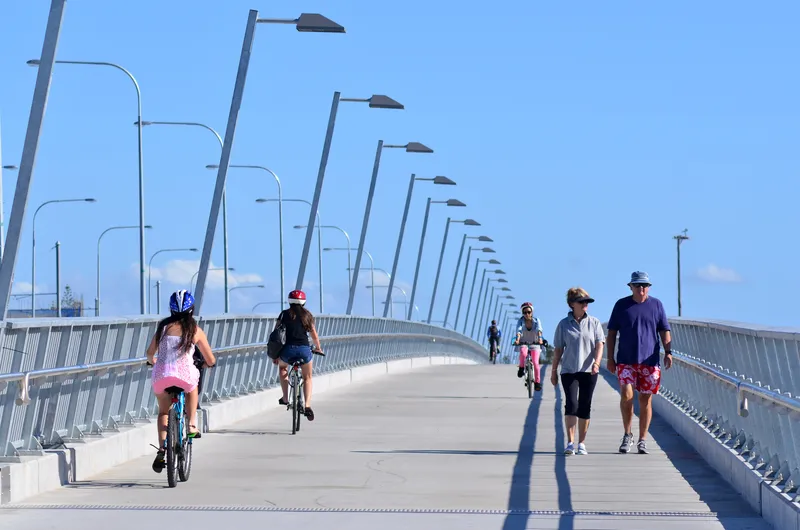
Q-Free Australia has installed the first of four planned pedestrian and cycle counters for 2023 in Gold Coast, Queensland.
The Australian city has a population of over 600,000 people, plus 10 million tourists visiting each year.
The Gold Coast City Transport Strategy identified a requirement for major improvements in the mobility of pedestrians and cyclists towards a goal of increasing cycle and pedestrian traffic share by 5% over automobile traffic.
The Hi-Trac CMU cyclist and pedestrian monitoring unit will collect data, distinguishing between several traffic types such as pedestrians, cyclists and skateboarders.
The data will identify service gaps and hotspots and recommend new paths and networks, improving road safety and reducing emissions.
Q-Free now has 34 Hi-Trac CMU counters in the region generating data on the volume and movement of vulnerable road users.
The equipment is installed on solar-powered poles and off-path cabinets, using piezoelectric, passive infrared, and overhead sensors to identify and count the pedestrians and bicycles using the path.
The project "shows our technical abilities along with our commitment to safety and sustainability", said Silje Troseth, Q-Free’s Asia-Pacific vice president and GM of Australia.
“Citizens and tourists of Gold Coast City will be enjoying the benefits of this project for decades.”
Each unit can monitor four separate bicycle/pedestrian lanes, integrating into signal and traffic management systems, and setting up real-time displays and alerts.









